Chodo Island (초도(여수))
2021-06-01
Samsan-myeon, Yeosu-si, Jeollanam-do
+82-61-659-1770
Located 77 kilometers southwest of Yeosu, Chodo Island is surrounded by islands of various sizes. The island has three small fishing villages around the central Sangsanbong Peak. The island is famous for its sunset view from the peak and the sea-parting that happens at low tide between Jinmak Village and Mokseom Island off the coast. There are two beaches on the island, with Jeonggang Beach being a popular vacation location among families. There is only one passenger ferry between Yeosu and Chodo daily. There is also a cruise tour to the nearby islands, a popular activity for overnight guests.
Sinjeongho Tourist Park (신정호관광지)
2020-03-26
616, Sinjeong-ro, Asan-si, Chungcheongnam-do
+82-41-540-2518
Sinjeongho Tourist Park was created in 1993 on land spanning 272,000 square meters in the Bangchuk-dong area of Asan City. The park has various attractions including a grass plaza, bird garden, wildflower park, sculpture park, youth facilities, and 8.45 meter-high statue of Admiral Lee Sun-shin. The ecological park at the tourist park entrance is home to a variety of plants such as pine trees and azalea flowers, while the sculpture park attracts visitors in the winter with a large ice sculpture 8 meters wide and 3 meters high. Sinjeongho Lake, located in front of the tourist park, is a popular fishing spot throughout the year and visitors can enjoy a leisurely ride on motor boats or pleasure boats.
Jirisan National Park (Hamyang Section) (지리산국립공원(함양))
2021-02-05
Baengmudong-ro, Hamyang-gun, Gyeongsangnam-do
+82-55-970-1000
Designated as the first national park in Korea on December 29, 1967, Jirisan National Park stretches out over 483.022 square kilometers, making it the largest national park among all 22 national parks. It covers Korea’s three southernmost provinces; Gyeongsangnam-do, Jeollanam-do, and Jeollabuk-do, one city, four counties, and 15 districts of eup and myeon. The area in Gyeongsangnam-do has Ssanggyesa Temple, Daewonsa Temple, Beopgyesa Temple, Chilbulsa Temple, and Chilsangsa Temple as well as valleys, falls, and other tourism resources. In particular, famous tourist spots in Hamyang area are Chilseongyegok Valley and Hansingyegok Valley.
Seongmun - Stone Gate (석문)
2020-06-13
644-33, Sambong-ro, Danyang-gun, Chungcheongbuk-do
+82-43-422-1146
Two hundred meters upstream from Dodamsambong Peaks is a large rainbow-shaped stone gate on the left side of the river. This oddly-shaped stone arch is called Seongmun, which means Stone Gate. Due to its fascinating scenery, Seongmunm is the second of Danyang’s Eight Scenic Beauties. To the left of the Stone Gate is a small cave. Inside the cave is Okdap (Stone Field), which is believed to have been cultivated by an old enchantress. The legend of Okdap says that an old enchantress who lived in heaven once came to the earth to get water and then dropped her binyeo (traditional Korean hairpin) near Seongmun. As she searched for her binyeo, she was extremely impressed by the beautiful views. Mesmerized, she left heaven and lived near Seongmun as an ordinary peasant, growing crops and expanding farmlands.
Dodamsambong Peaks (도담삼봉)
2024-03-15
644 Sambong-ro, Maepo-eup, Danyang-gun, Chungcheongbuk-do
+82-42-422-3037
The Dodamsambong Peaks consist of three distinctive stone pillars - Janggunbong, Cheobong, and Cheopbong Peaks - that rise majestically from the Namhangang River. Janggunbong, the tallest of the trio, hosts the historic Samdojeong Pavilion, a famed gathering place for the region's literati. Adjacent to these natural wonders, the Dodamsambong Tourist Area offers amenities and attractions such as the Sambong Story Hall, the Hwangpo Sailboat, a cruise ship quay, and a rest area, enhancing the visitor experience.
Yeosu Yeongchwisan Mountain (영취산 (여수))
2024-03-08
Sangam-dong, Yeosu-si, Jeollanam-do
Yeongchwisan Mountain is not very tall, rising just 510 meters above sea level, but the mountain has long been deemed as a spiritual guardian of the Yeosu peninsula. During the old days, people held rituals for rain or offered wishful prayers here. Geumseongdae and Dosolam Hermitage are two Buddhist places of worship on the mountain.
As Yeongchwisan Mountain is not very tall, taking any hiking course will lead hikers to the peak within about four hours. The mountain is a perfect place for family travelers to go hiking. Yeongchwisan Mountain is also widely known as the first place in Korea where azaleas begin to bloom in the spring, and is one of the top three most famous places in Korea for azalea blossoms. In April each year, the azalea festival is held in the mountain. The festival offers a variety of programs including a ritual for the god of the mountain, a writing contest for students, a photo contest, and Miss Azalea beauty pageant. During the festival, visitors can enjoy various events and local foods.
Taedo Islands (태도)
2021-06-08
25, Sangtaedo-gil, Sinan-gun, Jeollanam-do
Taedo Islands, located between Hongdo Island and Gageodo Island, comprises three islands. The island in the middle is called Sangtaedo Island, the island next in line is Jungtaedo Island, and the last is Hataedo, the southernmost island located nearest to Gageodo Island. Deep and clear waters surrounding the islands make for a perfect habitat for marine life. Taedo Islands are popular for seaweed that grows naturally on the rocks, often collected by hanyeo (woman divers). People on Taedo Islands have great respect for nature and perform rituals every year on Seollal (Lunar New Year's Day) for prosperity and safety at sea.
Jinnamgwan Hall (여수 진남관)
2022-08-16
11, Dongmun-ro, Yeosu-si, Jeollanam-do
+82-61-659-4756
Jinnamgwan Hall (National Treasure) is located at the site of the Jeolla Province naval base during the Joseon dynasty. At that time, it was a watchtower called Jimhaeru, where Admiral Yi Sun-sin commanded his forces during the Imjin War (1592-1598). The original building burned down near the end of the war, and Admiral Yi Sun-sin's successor, Yi Si-eon, constructed Jinnamgwan Hall, a large gaeksa (government officer guesthouse) at the site in 1599.
Jinnamgwan Hall is a single-story gable-roofed building with 15 kan (traditional Korean measurement between two pillars) on the front and 5 kan on the sides. It is the largest single-story goverment building from the Joseon dynasty in the region. At the hall entrance is a small museum outlining the history of Jinnamgwan and the Imjin War, and the famous Yeosu Stone Statue (Jeollanam-do Tangible Cultural Asset) is located within the precincts of the hall. Nearby attractions include Jasan Park, Odongdo Island, Dolsan Bridge, Chungminsa Shrine, and Manseongni Beach.
Heungguksa Temple (Yeosu) (흥국사 (여수))
2021-11-05
160, Heungguksa-gil, Yeosu-si, Jeollanam-do
+82-61-685-5633
The name of Heungguksa Temple means “if the country prospers, the temple does well.” The temple was established to pray for the country to flourish. Located on Yeongchwisan Mountain, Heunaguksa was founded by Bojo Guksa in 1195.
Within the compound are other buildings including Wontongjeon, Palsangjeon and Daeungjeon (Main Hall). The temple’s main hall, a Treasure, is open in its structure and equipped with traditional Korean doors. A Buddhist painting named Hubultaenghwa is designated as a Treasure. At the entrance to the temple is a rainbow-shaped stone bridge called Honggyo Bridge,a Treasure, which is widely known as a distinguished work of art.
On Yeongchwisan Mountain, azaleas begin to bloom in early April and completely take over the mountain by the end of the month. Azalea blossoms create an extravagant view along the ridgeline of Yeongchwibong Peak (439 meters above sea level) and Jillyebong Peak (510 meters above sea level).
During this period, the Mount Yeongchwisan Azalea Festival takes place.
Jirisan National Park (Namwon) (지리산국립공원(남원))
2024-04-07
255 Jeongnyeongchi-ro, Jucheon-myeon, Namwon-si, Jeonbuk-do
+82-63-630-8900
Jirisan National Park is the second-highest mountain in South Korea, standing at an elevation of 1,915 meters, spanning across the provinces of Gyeongsang-do and Jeolla-do. Revered as a sacred mountain alongside North Korea's Baekdusan Mountain, it is home to the Asiatic Black Bear and features numerous peaks, including Cheonwangbong Peak. In spring, various flowers such as Royal Azalea bloom, while lush forests thrive in summer, vibrant foliage adorns the landscape in autumn, and the winter scenery boasts snow-covered peaks and icy landscapes.
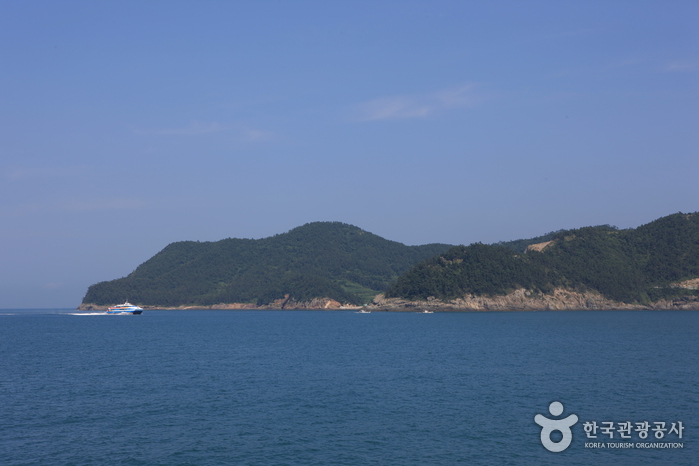
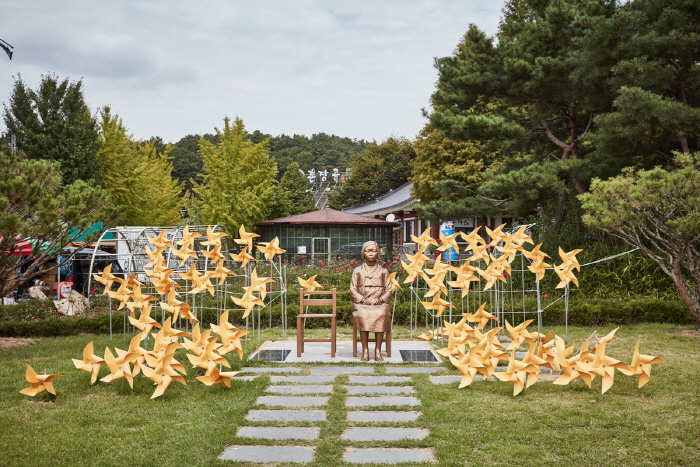
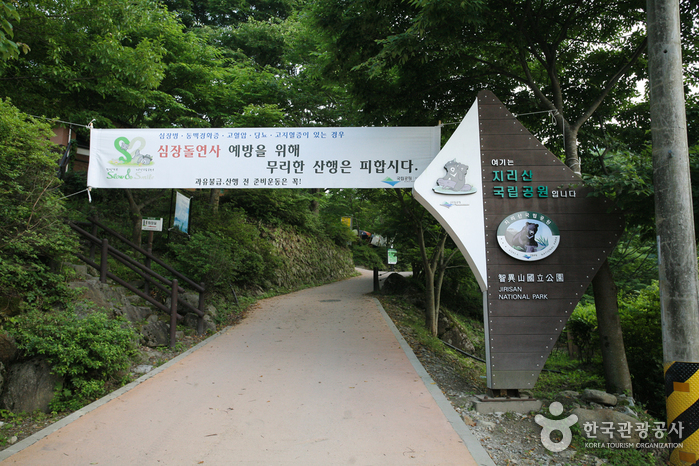
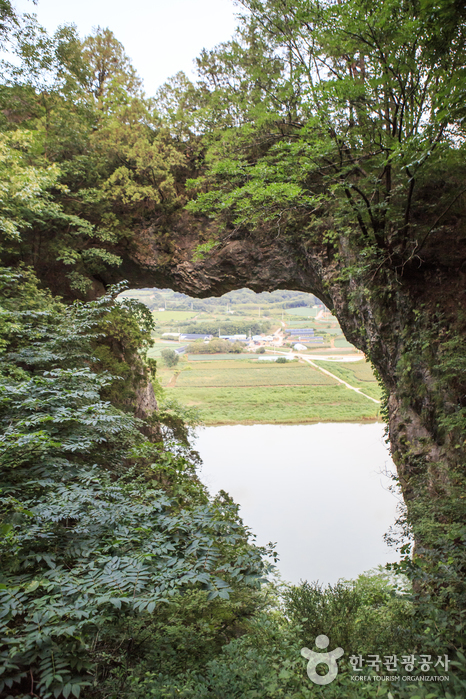
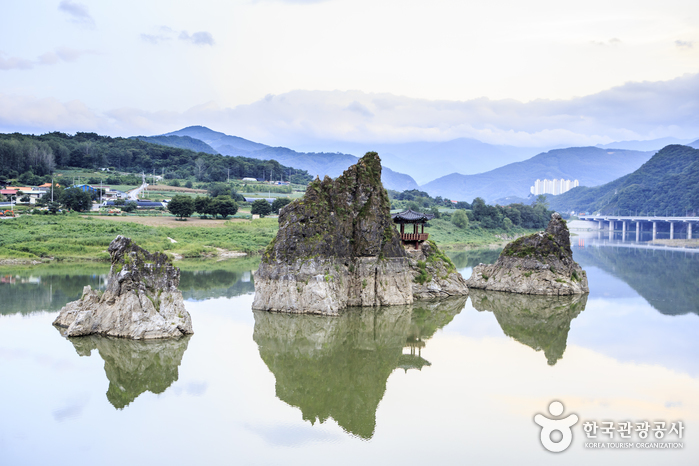
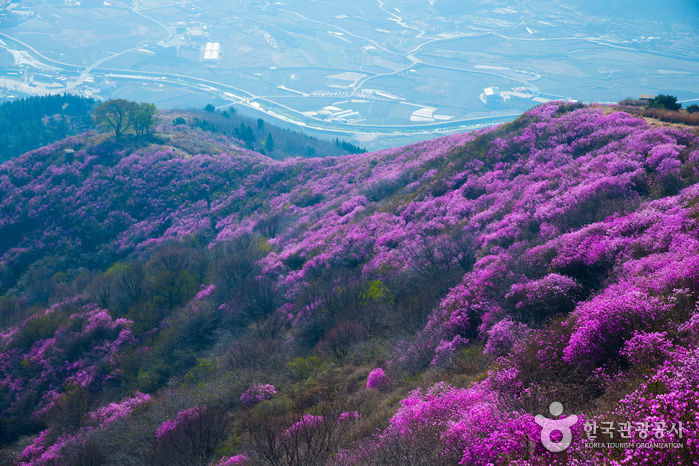

 English
English
 한국어
한국어 日本語
日本語 中文(简体)
中文(简体) Deutsch
Deutsch Français
Français Español
Español Русский
Русский